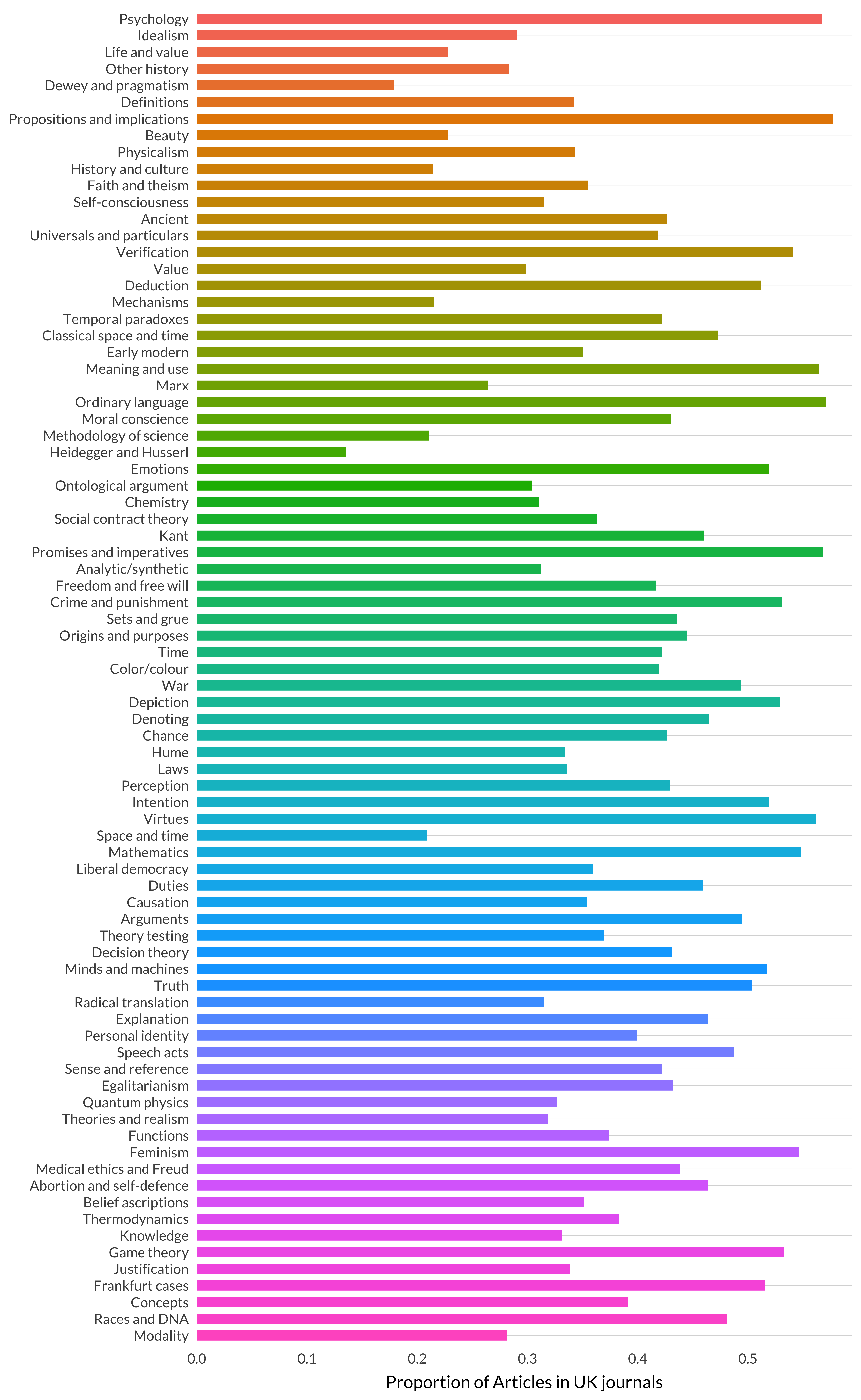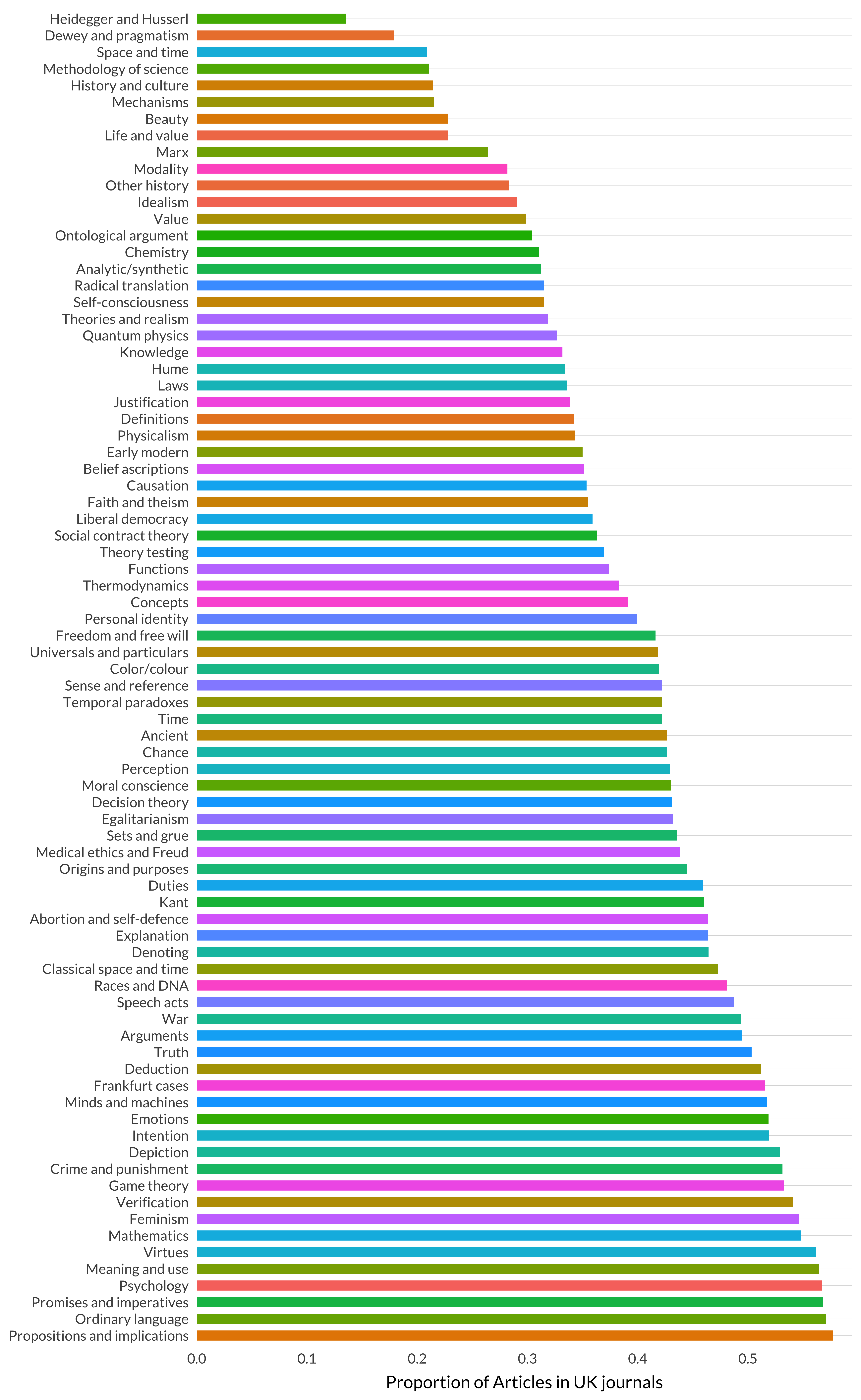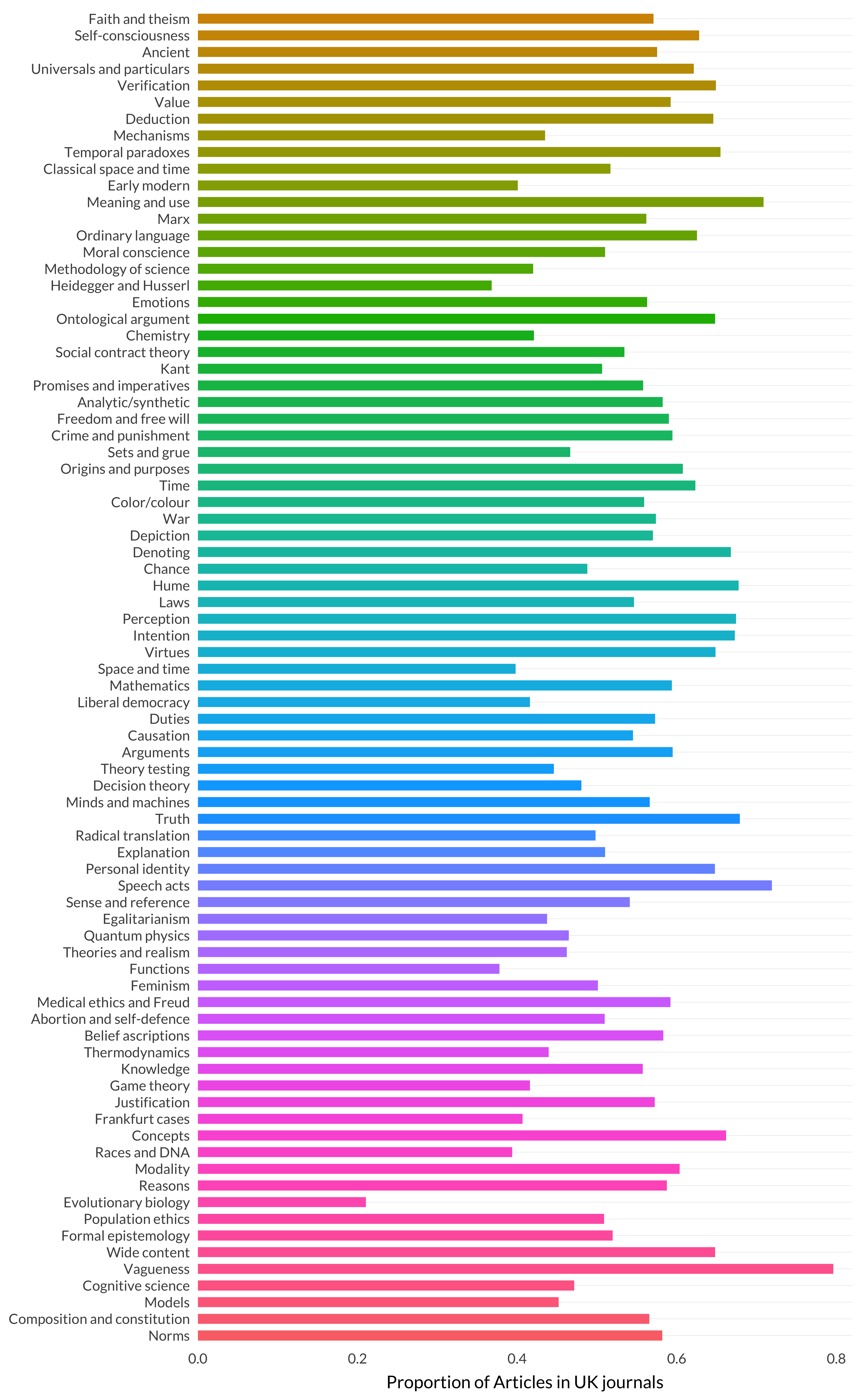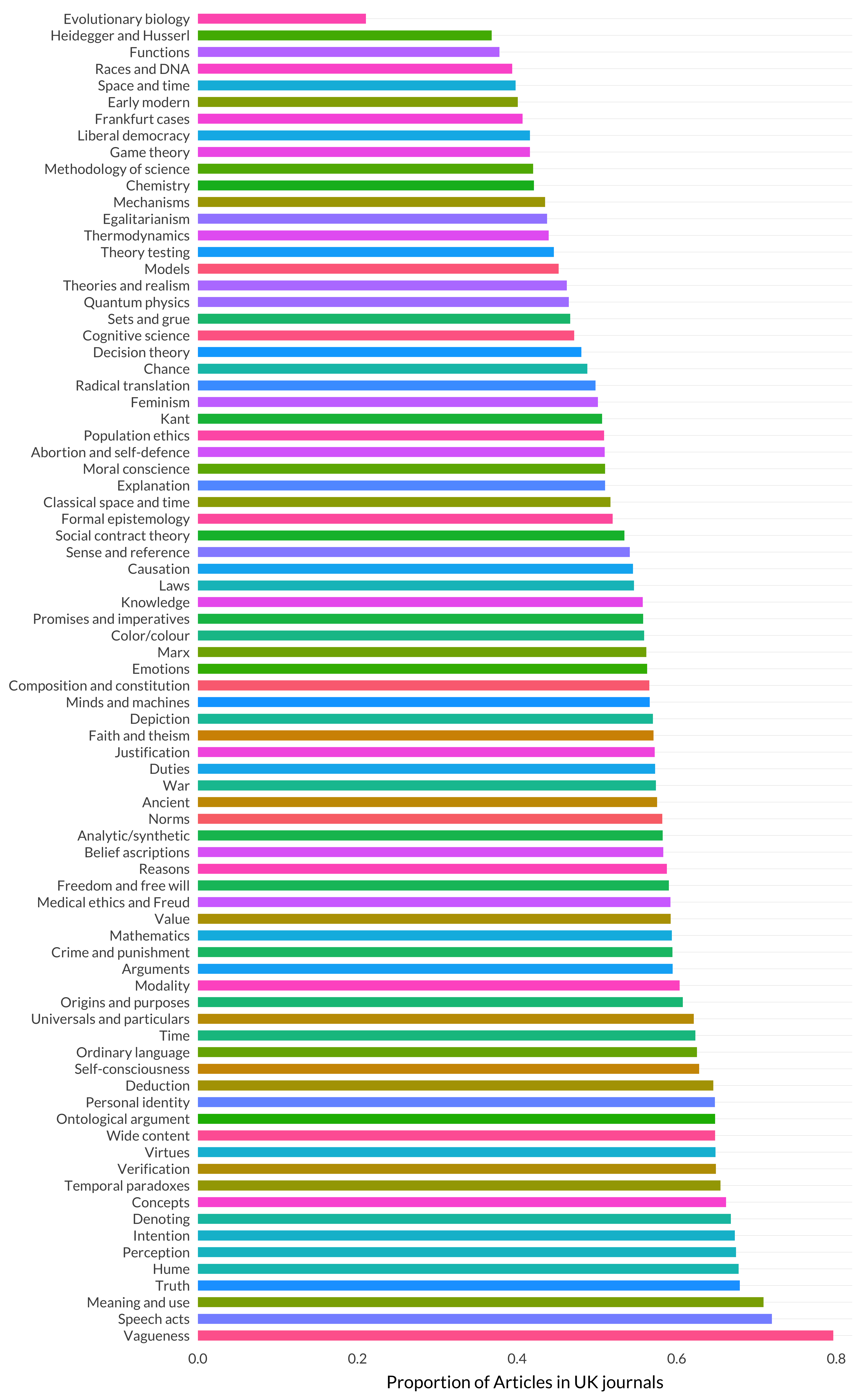8.9 Trans-Atlantic Philosophy
Especially in the middle of the twentieth century, there is a very different feel to the UK journals as compared to the US journals. Or at least that’s how it feels to me when I read those journals. Let’s see how much the model agrees with that impressionistic assessment.
I’ll run this test in two parts. First, I’ll focus on 1924–1973. This takes us from the Journal of Philosophy getting going until Ryle leaves the editorship of Mind. (He left in 1971, but the backlog of papers he left behind meant the next two years were spent publishing articles he accepted.) And so we’re on roughly even footing, I’ll focus on just four journals:
- Two British journals: Mind and Proceedings of the Aristotelian Society.
- Two American journals: Philosophical Review and Journal of Philosophy.
For each topic, I’ll look at the proportion of the (weighted) articles they had in those four journals (over those fifty years) that were in the British journals. This is a rough and ready way of teasing apart what UK and US philosophy looked like over that time. (Obviously neither pair of journals is fully representative of their country’s philosophical scene, but they aren’t the worst proxies either.)
I’m leaving off topics 81–90 because they are so little represented in the journals over this time period that the ratios being graphed are more noise than signal.

Figure 8.10: Proportion of articles in the big four journals that are in UK journals, 1924–1973.
As we can see, there’s quite a bit of variation there. Let’s reorder the bars so the extremes are more visible.

Figure 8.11: Proportion of articles in the big four journals that are in UK journals, 1924–1973.
There is a lot more phenomenology in the US journals than the UK journals. This surprised me a little, since I didn’t include Philosophy and Phenomenological Research in the study. Less surprisingly, Dewey and pragmatism is a more American than British topic. After that, there is much more attention to philosophy of science, and social and political philosophy.
On the UK side, there is ordinary language philosophy. That’s not news, but it’s nice to see the model found this pattern. There are a couple of topics that have tiny numbers on each side of the Atlantic in these journals: game theory and feminism. But otherwise the focus in the United Kingdom is more heavily on language and on ethics. The latter is a bit of a theme across the journals. From day one there is attention being paid to questions of value. But for a long time there is very little work on ethics that treats it as an autonomous subject as opposed to deriving moral conclusions from, e.g., metaphysical premises.
There is also, as perhaps should be clear from the names of the journals, more philosophy of mind in the UK journals. Apart from idealist-tinged works on self-consciousness, there isn’t much of this in the US journals. There were more psychology articles in the Philosophical Review in its early years, but they had stopped by 1924.
Let’s do the same study for 1974–2013. This time I’ll leave off the first ten topics, because they are largely noise.

Figure 8.12: Proportion of articles in the big four journals that are in UK journals, 1974–2013.
Again, there is substantial variation. I think this is telling us more about the journals than the philosophical scenes in the different countries, but I think there are some signals here. Let’s reorder that graph to make the outliers more explicit.

Figure 8.13: Proportion of articles in the big four journals that are in UK journals, 1974-2013
The US side is very heavily represented by philosophy of science topics. I don’t think that’s really a national difference; it mostly tells us that the Journal of Philosophy was the generalist journal that was most friendly to philosophy of science.
The UK side is a bit more interesting. logic, philosophy of language, and philosophy of mind are very heavily represented at that end of the graph. It isn’t surprising that speech acts, perception and concepts are near that end, but the magnitude was greater than I expected. And I had no idea that vagueness was so English; though maybe if I’d included other US journals here (especially Noûs) this would have been different.
It would be useful to have more matching pairs of journals to confirm this, but I think this is some evidence of a fairly substantial split in interests between the two sides of the Atlantic.